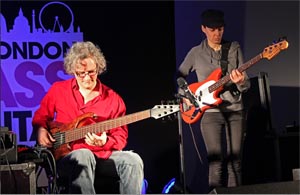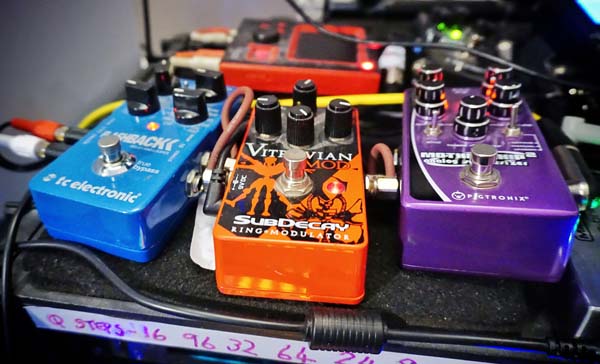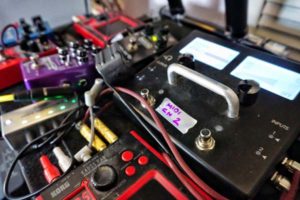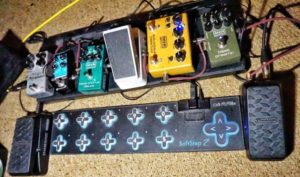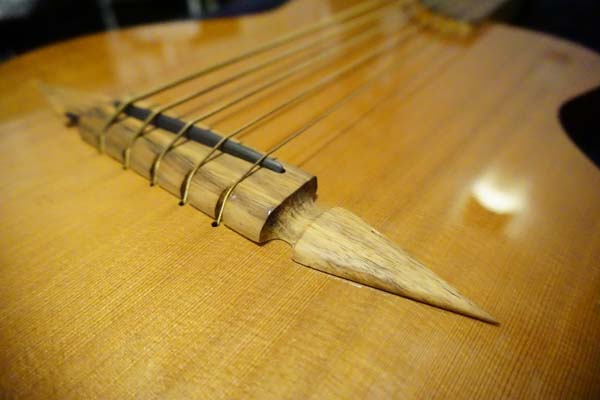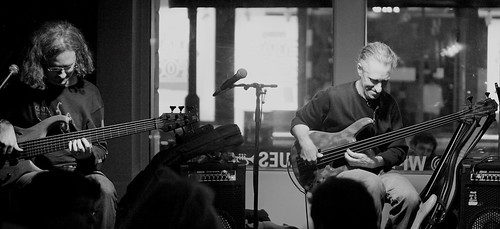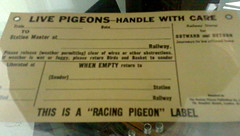Hindsight is a wonderful thing. I recently found a recording of a solo show from January 2002. So that’s after my first album, but before Not Dancing, before Conversations with Jez Carr, and certainly before the Level 42 and 21st Century Schizoid Band tours that changed a lot for me in so many ways…
It was from a “loop fest” gig at a venue called Cayuga Vault in Santa Cruz, put on by percussionist and community-builder Rick Walker. Rick has done an extraordinary job of building an unlikely community around people who employ looping tech in their performances, and now hosts an annual festival in Santa Cruz. In those early days, everything was a little more ad hoc, but they were absolutely formative shows for me both in terms of audience building and exposure to other artists doing really interesting things at the intersection of improvisation and looping.
Which is kind of the most interesting bit about this recording, that it came at a time when my gigs were mostly improvisation on known pieces. They were improvised in the way that a gig of standards is improvised – the tunes were fixed but then improvisation happened in the solos. Actually, that’s being a little unfair to myself, as the arrangements would evolve on the fly and I would do momentary mash-ups of different tunes and ideas, but it wasn’t my standard practice to just make stuff up for the majority of a gig.
On this occasion I actually played a mixture of improv and tunes, though on one of the tunes, Channel Surfing (which I’d been performing in various guises for a while but would be recorded til 6 months later), Rick grabs a mic and starts to beatbox along with the piece, which mostly works, certainly well enough that it was a deeply enjoyable addition to the gig. We did two collaborative pieces at the end which mostly serve to reveal how little idea I had of what I wanted to do in a collaborative improv setting. I really had no idea what I was doing here. So we’ll leave that one in the vault!
I may actually end up mixing some other bits of this gig as a bootleg for Bandcamp subscribers, because it tells the story in the title of this post – it speaks of just what kind of evolution has happened since those days, in the intervening 23 years.
That general format for gigs, of tunes with improvisation layered on them, continued from then until about 2011/12 when I was touring with the great Daniel Berkman. As I’ve noted before, it was on listening back to the recordings of those gigs that I realised (with some degree of shock) that the absolute creative low point of every set was my solo piece. It was the only part of the evening that was wholly preconceived and existed to try and sell merch – it was a tune from the latest album I’d put out and gave me a chance to talk about that. Whereas all the rest of the music was exciting and dangerous and unique to that moment, this was like an advert break.
That’s when I determined to stop doing gigs like that, and to improvise everything. And in the Bandcamp subscription I found the economic model and community context that made sense of recording all of those gigs and releasing them. That wouldn’t make any sense at all if I was playing the same tunes night after night, but with improv, every album tells its own story, and has been mentioned quite a few times by subscribers, my unwillingness to tie any of it down to a specific genre means its constantly evolving, resulting in a massively varied body of work that still sounds like me.
But this is improv from the start of that journey, baby-Steve getting into the swing of it. And some of it is really good. There are good ideas and sounds, and some stuff where you can tell I’ve been listening to a lot of Derek Bailey alongside all the Paul Simon, Joni Mitchell, Talk Talk and Bill Frisell that happened inbetween the epic amounts of RnB and hip hop that filled my listening time. There’s not much of the RnB here, that influence took longer to assimilate, but the rest of it is bubbling away, at a nascent, naive and charming stage.
So hopefully I’ll have a few bits from this gig out as a subscriber release soon – not all of it, because the recording is actually plagued with digital artefacts (it may be that it was just a bad rip from the CDR I was given, so if I can find that and re-rip it, we could be in luck, but for now I’m assuming I’ll have about three or four tunes that are at least salvageable to curio-status).
But my advice is, go back and hear what you were doing at the start of your journey. Doesn’t matter if that was just six months ago, or if you’re in your third year at college and need to go see what you submitted for assessments in your first year. Keep track of your progress, cos it’s easy to perpetually feel like you’re not enough, when in fact you’re growing and progressing in all the right ways. Keep at it. x
(the photo at the top is actually me at Traders in Petersfield some time in 2003/4, but was the nearest I could find at short notice 🙂 )


